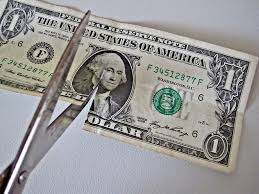 Market-friendly think tank, the CATO Institute, is doing its part in lobbying for a cut in the C-Corp rate. Wall Street hopes CATO’s Alan Reynolds can convince Washington to get on with it.
Market-friendly think tank, the CATO Institute, is doing its part in lobbying for a cut in the C-Corp rate. Wall Street hopes CATO’s Alan Reynolds can convince Washington to get on with it.
In a column published on May 30, Reynolds pushes back hard on the narrative in the financial media, as well as by Ways & Means Chairman Kevin Brady and other Establishment Republicans, that corporate tax rate reductions mean the government needs to find money somewhere else. Reynolds disagrees.
He makes his case by examining the microeconomic case for cutting the corporate tax based on the OECD experience. Since 2008, the average OECD nation’s corporate tax rate has been 25% and during this period corporate tax revenues have averaged 2.9% of GDP. Our 35% C-Corp rate, effective since 2008, is capturing just 1.9% of GDP.
Using the OECD experience, when countries have cut corporate tax rates, corporate tax revenues have either stayed the same or grown as a percentage of GDP. The main reason is simple: tax avoidance is reduced. This is similar to why cuts to the capital gains tax also generate more revenues; it raises the volume and frequency of asset sales. Economic growth is increased as companies weigh out the risk and legal costs of tax avoidance.
There is an intense fight within the Republican Party about the best course for tax policy. Many investment firms have been betting all year on falling tax rates.
For Reynolds, the border adjustment tax is also a non-starter. “A border adjustment tax is depicted a tax increase for some companies to offset a tax cut for others,” he says. “No wonder the idea has been ruinously divisive.”

